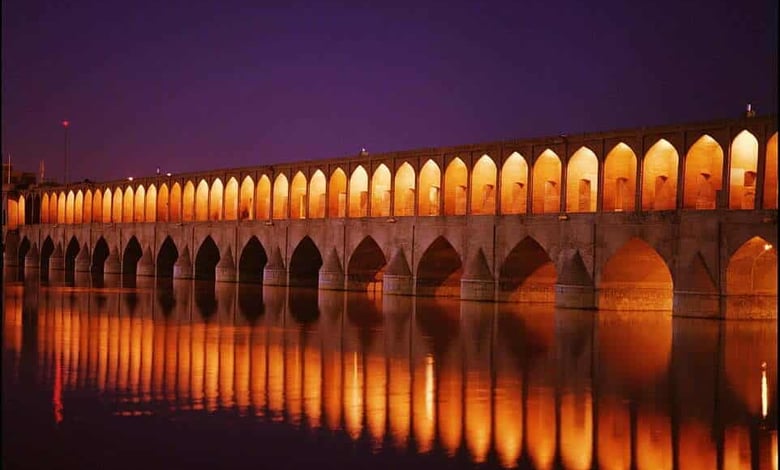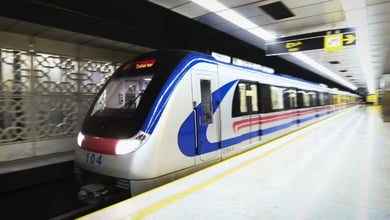Isfahan’s Top 10 Must-See Destinations

One of the most historical cities in Iran with numbers of magnificent and beautiful monuments to visit is Isfahan. Numerous palaces, bridges, mosques, and bazaars are the reasons why the city is included in every tourist itinerary when visiting Iran.
Since there are lots of monuments to visit in the city, and considering limited time people have when traveling around Iran, we are introducing top 10 places to visit in Isfahan in this article.
In addition to the great heritage of the city, the people of Isfahan has a great taste, and you can find some of the best sweets, confectionery, and cuisine in the city. For instance, Khoresh Mast, and Beryani are the local food of the city, which rarely can be found in other cities. So, don’t forget to treat yourself with these delicious dishes when you are in Isfahan.
Contents
Naqshe Jahan Square and its monuments

The magnificent Naqsh -e Jahan Square (Naqsh stands for Image and Jahan for the World), is located at the heart of the city. The complex along with a Bazaar, a Palace and two Mosques listed as UNESCO’s World Heritage Sites in 1979. Due to the great importance and beauty of the place, it is somehow impossible to find a cultural tour to Iran without a visit to this area.
All around the square is a two-story Bazaar which is the biggest close-bazaar in the country. There are also some monuments all around the square, Ali Qapu Palace on the west side, Sheikh Lotf Allah Mosque on the east, Shah Mosque on the south side, and Keisaria gate on the northern side of the square.
While there are several gates around the square, Keisaria gate is considered as the main entrance with a great view of the square and all buildings around it.
Ali Qapu Palace which literally means Ali (“imperial” or “great” in Farsi), and Qapu (“gate” in Turkish) originally designed as a vast portal, with forty-eight meters high and six floors. There is a spiral staircase between floors to give access to the upper ones. There is a Music Hall with deep circular niches in walls in the sixth floor.
Sheikh Lotfollah Mosque is a masterpiece of Iranian architecture which was built in the Safavid Dynasty. The construction of the mosque lasts in about two decades and finished in 1619. It was built by the order of Shah Abbas I, to be used as a private mosque for the royal family. Therefore, in contrast to all mosques, it does not have any minaret.
Shah Mosque, which is also known with different names as Masjed-e Jadid-e Abbasi (New Abbasi Mosque), Royal Mosque, or Imam Mosque, was built about 200 years ago during the Safavid dynasty, in the order of Shah Abbas I.
It is known as the masterpieces of Persian architecture in the Islamic era. And the beauty of the mosque is mainly due to the seven-color tiles and calligraphic inscriptions.
Jame Mosque of Isfahan

Most international tourists who have a visit to Isfahan believed that they have not seen a more beautiful site in Iran than Jame Masque of Isfahan, and a travel to Isfahan is not completed without visiting this place. Masjed-e Jame of Isfahan or the Jame Mosque of Isfahan had a magnificent effect on the architecture of mosques in Iran and Central Asia.
The main building which is now used as the mosque is the result of continual construction, reconstruction, additions, and renovations throughout the centuries from the eighth century (to be specific 771) till the end of the 20th century.
One of the notable items about this mosque is its iwans which is an open space with a view of the sky. The mosque has four-iwans which are face to face, two by two, and the biggest one in the direction to Qibla of Muslims in Mecca.
Khaju Bridge

There are seven historical bridges in Isfahan. One of those which is the most famous and popular one is Khaju Bridge. The bridge was built around 1650, in the order of Shah Abbas II, the king of Safavid Dynasty. The bridge built with two aims to serves as a bridge and a weir to link the Khaju quarter on the north side of the city with the Zoroastrian quarter across the Zayanderud.
The bridge also has another function to be a place for public meetings of Shah with ordinary people. There are 23 arches at the bridge with 133 meters’ length and 12 meters wide. Originally it was decorated with tile work and paintings.
The mausoleum of Arthur Pope and his wife Phyllis Ackerman is situated nearby.
Si-o-se-pol Bridge

The original name of this bridge was Allah-verdi Khan Bridge. However, it is more popular as Si-o-se-pol which is the largest bridge over the Zayanderud River. The bridge was built approximately four hundred years ago during the Safavid Dynasty.
The bridge which is one of the most famous examples of architecture during the Safavid Dynasty was built to serve as both a bridge and a dam. The other reason to build the bridge was to connect the neighborhood of mansions of the elite in one side, to Armenian neighborhood of New Julfa.
Isfahan Music Museum

The most recent place in this list, which was built and opened to visitors just a few years ago in Isfahan, is the Music Museum. It is located in the Armenian Quarter in Jolfa and exhibited a great collection of more than 300 traditional Iranian instruments. If you are lucky enough you will see a live performance of folklore musicians at the museum. After a visit to this museum and listen to numbers of music there, you will not only learn about traditional music but also about Iran’s history and culture.
Vank Cathedral

Vank means “monastery” or “convent” in the Armenian language, and this cathedral named Vank, because it was built for Armenian people who resettled by Shah Abbas I in this district due to the Ottoman War from 1603 till 1618.
The Holy Savior Cathedral, which is known as Vank Cathedral, is situated in the New Julfa district and was built in 1606.
Among all the interesting items and design at the museum, no one will ever forget about the magnificent paintings on the ceiling and walls at the main building which is covered with fine frescos and gilded carvings. The delicately blue and gold painting of the central dome depicts the Biblical story of the creation of the world and man’s expulsion from the Eden. The ceiling above the entrance is painted with delicate floral motifs in the style of Persian miniature.
Chehel Sotoun Palace

The Chehel Sotoun Palace is one of the nine gardens which are known as Persian Garden which all as a collection registered as World Heritage Sites.
The main purpose of building the garden was to use it as a royal pavilion, it was constructed at the end of the sixteenth century by Shah Abbas the second. There is a pavilion at the end of the garden with 20 columns, which has a nice pond in front of the building.
“Chehel Sotoun” literally means “Forty Columns” in Farsi, and the reason for that is the number forty is a symbol of a large number in Iranian culture. Some people also say that due to the reflection of columns in the water there will be forty columns in total, which is not true, as you can never see this reflected in the front pond.
The Great Hall is a gem which is decorated with frescoes, miniatures, and ceramics. The two middle frescoes represent the great battles of the Safavid era including the armies of Shah Ismail do battle with the Uzbek, and Shah Abbas II welcomes King Nader Khan of Turkestan with musicians and dancing girls.
On the wall opposite the door, from right to left, Shah Abbas I presides over an ostentatious banquet; Shah Ismail battles the janissaries of Sultan Selim; and Shah Tahmasp receives Humayun, the Indian prince who fled to Persia in 1543.
Hasht Behesht Palace

The Hasht Behesht Palace, which literally means eight-palace in Farsi is located at the heart of a beautiful garden, named Baghe Bolbol (The Nightingale Garden). The palace was built with the structure of an octagonal shape which is repeated in every room of the palace. It was constructed during the 1660s by the order of Shah Suleiman Safavid kingdom. The palace used to have an eye-catching decorated with new styles of stucco work, stained glass and mirror work. The Palace was renovated by Fathali Shah Qajar in the 19th century to be used as a residential palace by Zele Sultan (Fathali Shah’s son).
Menar Jonban

The Menar Jonban (Shaking Minarets) constructed during Ilkhanid Dynasty, at the time of the late King Oljaitu to be used as a mausoleum for “Amu Abdullah” who was a mystic and ascetic in Ilkhanid era. According to archeological studies, it is believed that the minarets were added to the mausoleum later by the Safavid scientists. These minarets have unique structures since when one of the minarets is shaken, the other minaret will shake the same time as well.
Atashgah – Zoroastrian Fire Temple

The Fire temple of Isfahan dates back to Sassanid-era. This archaeological complex situated on a hill, in the western part of Isfahan. The hill, which rises about 210 meters above the surrounding plain, was previously named Maras or Marabin after a village nearby.




